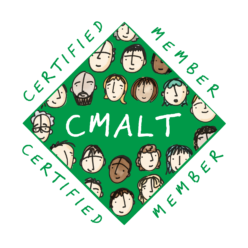Technical standards
Description
When Staffordshire University’s Policing courses were written, it was decided that they would use a blended learning approach. The nature of job would mean that students would be expected to work agile for certain elements of the course and so the ability to work from numerous locations would be essential. Students would need to have access to a computer with an internet connection to allow them to access Blackboard and Microsoft Office 365. Before I started at Staffordshire University, a Computer Specification Guidance document was put together detailing the minimum and recommended hardware and software specifications for laptops and computers. This document was added to the Candidate Handbook and sent to the police forces so that new recruits would know what they needed for the course.
 Loading…
Loading…
When I created the Digital Skills Induction for new students, I decided to include Laptop Specification in the menu, both as a reminder and just in case the students hadn’t received the specification details from their police force.

Reflection
For the distance learning part of the course, a laptop with reliable broadband Internet connection was essential. The overview of requirements listed the following:

Following a few first face-to-face sessions towards the end of 2019, I learnt a lot about real-life situations that weren’t covered in the specification. I disagreed that a webcam should be listed as a “desirable”. Even though students are often asked to turn their cameras off while the lecturer is talking, I think a camera is very important, in breakaway groups for example. For the best learning experience, I would say that a webcam is an essential for an online course because it helps build a sense of community. I also disagreed that a headset with a USB connection including integrated microphone and noise-cancellation capability is an essential. I would say that is a desirable because, in practice, a simple headset or earphones work perfectly.
Chromebooks
A desktop or laptop computer (PC or Mac) is listed as essential. What it doesn’t mention is Chromebooks and I have had some students contact me about purchasing them (the emails in the evidence section were initiated by a student query regarding Chromebooks). Some good points about Chromebooks are:
- Chromebooks have Google Chrome as a browser, which is the recommended browser for Blackboard.
- Chromebooks can access the students’ Office 365 Online accounts, so they can save work on the Cloud in OneDrive.
However, the main disadvantage of a Chromebook is that students can’t install Microsoft Office 365 apps (Word, PowerPoint, OneDrive, etc) on a Chromebook from their Microsoft Office 365 Online account as this only works for Windows and Mac Operating Systems. This means that they only have access to their work saved in OneDrive Online if they are connected to the Internet.
Chromebooks have limited storage and students can only open and edit Office documents if they have “Microsoft’s Office apps for Android devices” installed on the Chromebook. That is only possible if the Chromebook has the ability to download, install and run apps from the Google Play store. Because of those disadvantages, I had to make the decision not to advise students to purchase Chromebooks and I added a section to the Digital Skills Induction giving students that information.
Windows 10 S
For the operating system, Windows 10 is recommended. A problem I had on a few occasions in late 2019 was that some students turned up on their first day with brand new laptops that had Windows 10 S installed. When Windows 10 S came out, it was said to be more streamlined for simplicity, security and speed. However, Windows 10 S can only run applications downloaded from the Windows Store. This meant that it couldn’t run Google Chrome, which was recommended for certain software and apps, such as Blackboard Collaborate.
The only way that students could get Google Chrome onto their Windows 10 S laptop was by switching out of S Mode. Switching out of S Mode is a one-way process, though and, once the students had switched out, there was no going back. That caused a few problems because it’s not a straightforward process for anyone who isn’t digitally competent. The impact on the students was that they were unable to access what they were required to access until they had downloaded Google Chrome.
Browsers
The specification states that, when accessing Blackboard, all users are recommended to use Google Chrome. Most browser problems reported to me have been caused by not using Google Chrome. For example, a common problem reported to me by students was not being able to access Blackboard Collaborate and I discovered that this was because they were using Internet Explorer. However, I recently discovered that one of our partner police forces uses Microsoft Edge instead of Google Chrome and they have had few problems. This is probably because Google Chrome and Microsoft Edge are both based on the chromium browser engine.
Apple devices
When inductions were face-to-face, before the March 2020 lockdown, I discovered another problem was often caused by Apple laptops and phones not being able to access Public Wi-Fi. Because the students didn’t know how to make their devices access Public Wi-Fi, the impact on the students was that they were unable to access their online learning material. I had to research how to enable this and provided a link on the Digital Skills Induction called, “How to Force a Public Wi-Fi Network Login Page to Open“.
As a result of what I had learnt, I was asked by my line manager to review and update the information provided in the candidate handbook, which was then shared with the partner police forces.
Evidence


